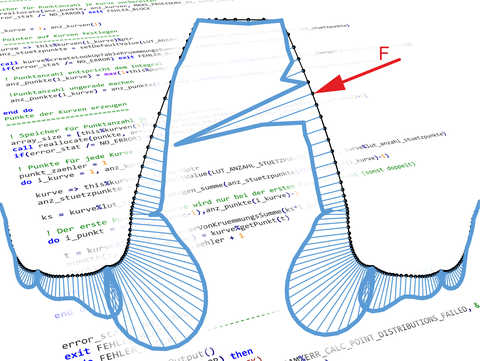FVA 732 II Local tooth root stresses in RIKOR
|
Full title: |
Extension of a program module for fast numerical stress analysis of arbitrary tooth cross-sections in RIKOR |
| Duration: |
07/2018 – 06/2020 |
|
Contributors: |
Dipl.-Ing. Wolf Wagner (TU Dresden, IMM) |
| Financing: | Forschungsvereinigung Antriebstechnik (FVA) |
| Project partner: | Gear Research Centre (FZG), TU Munich |
| Objective: | In-depth analysis options for tooth root load carrying capacity are to be created. The existing calculation method is to be applied and extended to internal gears. |
| Approach: |
In methods commonly used in practice for load capacity calculation according to standardized procedures (ISO 6336, DIN 3990, AGMA 2101), model approaches are used to assess the tooth root stress and derive a load capacity statement. On the other hand, the load carrying capacity limits of gearing are constantly being extended by optimized designs. This can lead to more complex stresses in the tooth root, which have not yet been directly taken into account according to standard procedures. In the case of internal gears, changing effects as well as ring gear influences come to the fore even further. Furthermore, for reasons of time and cost, the hardening layer is limited to the required minimum in the case of the surface hardened gears commonly used today. This requires increasingly more detailed calculation methods for the evaluation and differentiation of different variants, taking into account free tooth root fillets as well as production deviations. The assumption that the 30° tangent or the Lewis parabola at the tooth root can be used to determine the point with the greatest stress and the highest failure probability is not correct under these conditions. |
| Results: |
An improved module for the calculation of local tooth root stresses. |
